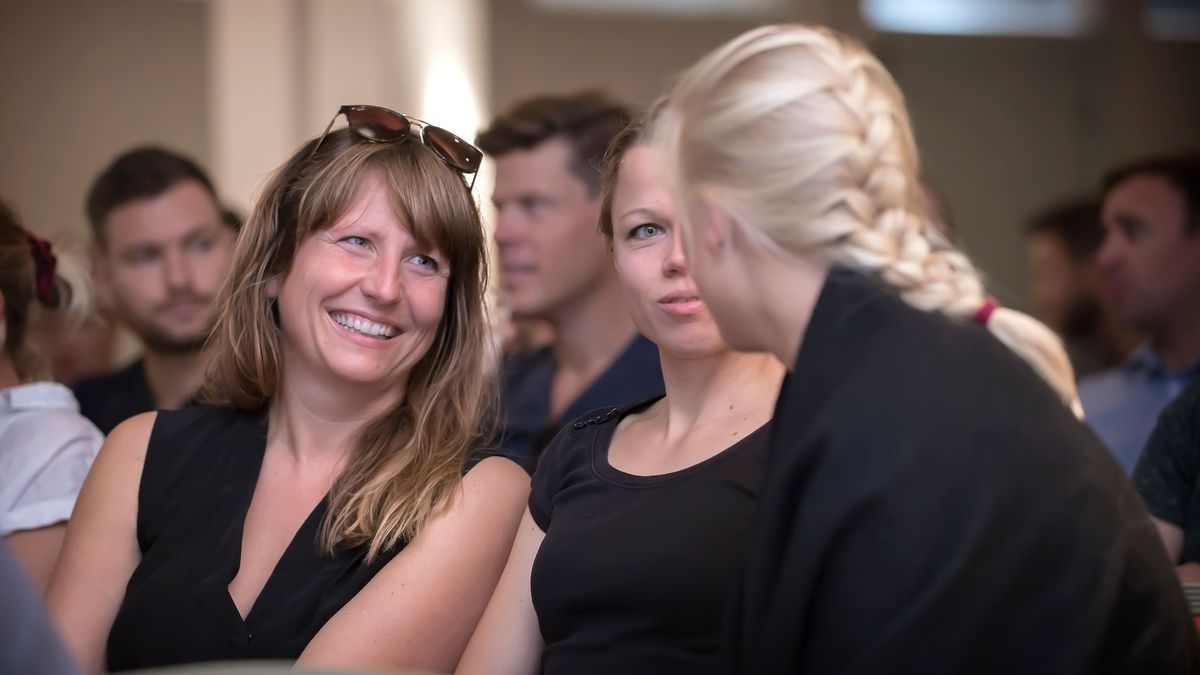Moving up without pushing anyone down
How a non-competitive environment breeds creativity


Words
Malin H. Teles
In many companies staying on top of the game demands a fiercely competitive approach, having sharp elbows and making sure to have the right allies to climb the career ladder. That is a perfectly good recipe to developing an organisation that is driven by fear, superiority, hostility and where innovation and creativity are stifled.
Share
Copied url to clipboard
Category
Culture and Leadership
The motivation for people to walk all over colleagues and coworkers in order to get ahead derives from the notion that competence and success are somehow limited, or depletable. In other words, that it’s not possible for more than a select few within an organisation to be successful and admired for their skills. Hence, you have to fight hard and recklessly to be part of that exclusive group.
In a creative company, like EGGS, this type of mentality makes no sense and only works against its purpose. We work, try, fail and succeed in teams - not alone. We’re all responsible for our individual contribution, but no employee is more important than the other. We co-create, cooperate and share our knowledge and expertise so that our collective competence grows. Not only within the organisation, but also outside it, together with our clients and partners. We move up without pushing down.

A competitive culture is a sure way to end innovation
Strong hierarchical and competitive structures in companies promote hostile and fearful attitudes among employees as well as managers. If your main concern is not making mistakes so that you won’t be punished or making sure to take all the credit you can, you will do your best to avoid being associated with a failing project or non-successful idea. The most effective way to avoid this is to never try something new – a detrimental tactic for any company that aims to be innovative.
Also, on a managerial level, it encourages toxic behaviours such as blaming failures on their employees whilst taking credit for successes themselves. This of course is highly discouraging and eats up any motivation the team members might have.
“We co-create, cooperate and share our knowledge and expertise so that our collective competence grows. Not only within the organisation, but also outside it.”

Malin H. Teles
Communication Manager , Oslo
Leaders lead by inspiring – not by managing
Of course, being innovative, non-competitive and lifting not only oneself but also one’s colleagues up, are not responsibilities that can be put on individual employees. Positive and collaborative attitudes start with leaders who inspire to and reward these types of behaviours. A leader who encourages trial and error, who doesn’t punish mistakes but still gives credit for new ideas and gives space for self-leadership, provides a good breeding ground for collaboration and creativity. On the other hand – a leader who attempts to lead by managing (and perhaps even micro-managing) – controlling, giving orders and supervising - does little more than keeping the employees in line, executing assigned tasks.

In EGGS, needless to say, we strive to be open, collaborative and encouraging. We do not reward toxic behaviours or attitudes but instead try our best to make it easy and natural to be friendly and helpful. Only that way will you thrive in our organisation. And only that way will our company continue to grow, innovate and create.
Get in touch
Interested in the topic of work culture? Reach out to Malin.
Reach out to the team - we're happy to answer questions, receive feedback or discuss the topic.

Malin H. Teles
Communication Manager , Oslo
Related articles

Culture and Leadership4 min read
Creative teams dare to share
Trust as a success factor

Our People7 min read
From Turkey to Norway - Meet Pinar Dumlu
Starting a new job from the other side of the continent

Our People6 min read
Meet Irene – the philosophising, synth-playing content designer
On how we can harness our creativity and why boredom might be our best ally